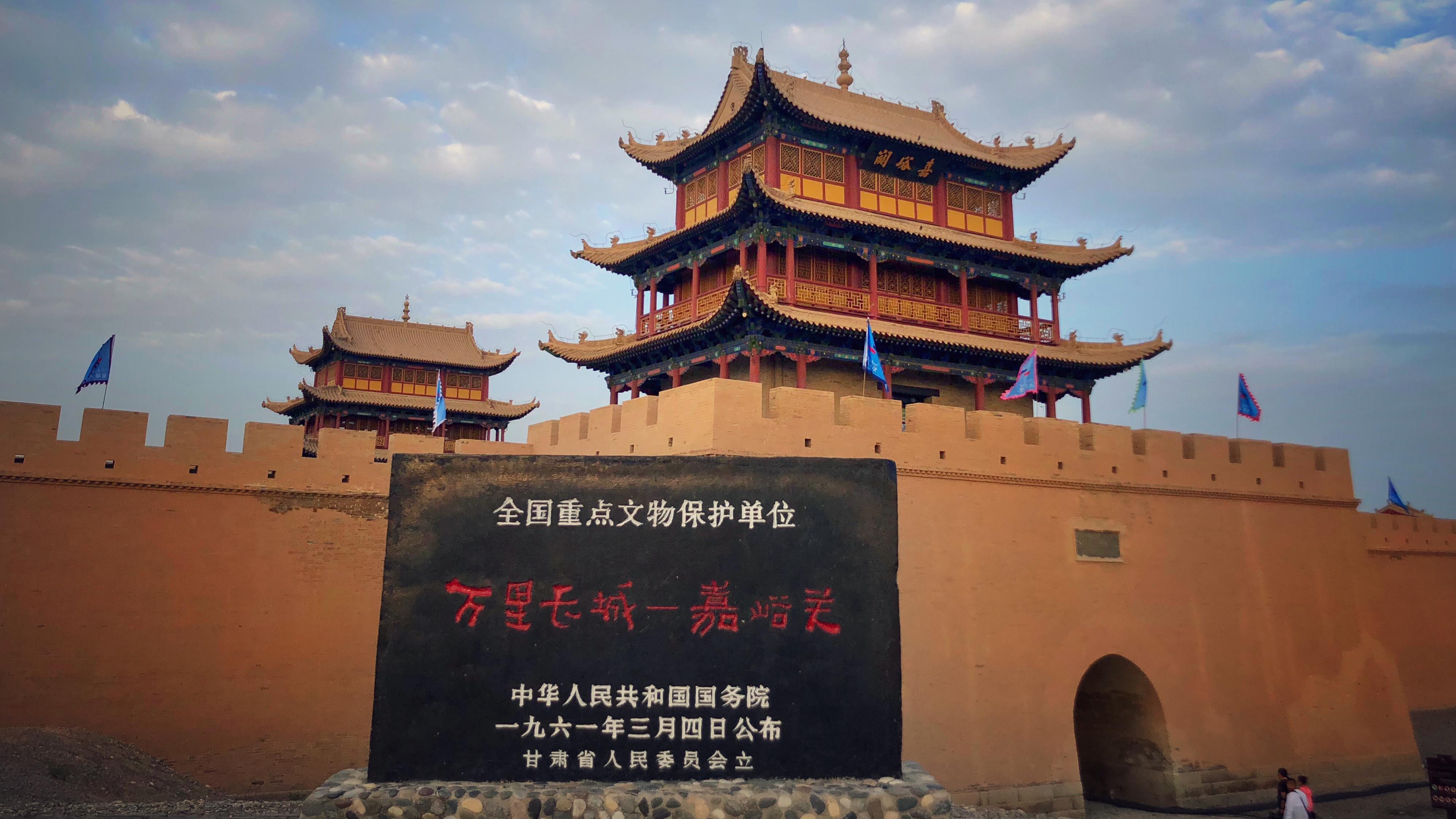
Travel
12:17, 25-Jun-2018
Jiayuguan Fortress: China's greatest pass under heaven
By Dong Xue
01:06

After almost a four-hour flight, we arrived in Jiayuguan City, northwest China’s Gansu Province, some 2,000 kilometers away from Beijing.
Standing on top of an isolated fort, stretches of sandy desert surround me. This isolated section of the Great Wall used to be a significant landmark along the shifting frontiers of imperial China, but has been overshadowed by more popular parts of the Wall outside the capital in modern days.
Dubbed "China’s greatest pass under heaven", the Jiayuguan Pass has been the anchor of the westernmost point of the Great Wall in Ming Dynasty, having served as a passageway for armies, merchants and envoys in the old days.

Jiayuguan Fortress / CGTN Photo
Jiayuguan Fortress / CGTN Photo
Today, officials are aiming to transform the old steel production town into a tourist destination, benefiting from the launch of a high-speed rail route in 2014.
“A series of tourist exchange and cooperation activities have been carried out with fruitful and remarkable results” said Du Jiang, from the Chinese Ministry of Culture and Tourism, at a recent tourism festival held in Jiayuguan.
The city itself has cashed in on the high-speed railway and an ever-growing interest in the mammoth structure that has come to be synonymous with China.
In 2017, Guansu Province received 239 million visitors from home and abroad, and raked in some 158 billion yuan in tourist revenue, according to data released by the deputy secretary of the Gansu Provincial Committee of the Communist Party of China (CPC).
Jiayuguan sits along one of the narrowest parts of the Hexi Corridor, which formed the route of trade and cultural exchanges between the East and the West decades ago. It was included in the list of World Heritage Sites by UNESCO in 1987.
Around the fort is an invaluable group of historic relics scattered around the Jiayuguan area, including the tombs of the Wei and the Jin Dynasties.

The underground tombs were discovered in 1972 by a shepherd, and had existed for over a millennium before the fort was built. There are as many as 1,000, though only one is open to the public.

SITEMAP
Copyright © 2018 CGTN. Beijing ICP prepared NO.16065310-3
Copyright © 2018 CGTN. Beijing ICP prepared NO.16065310-3